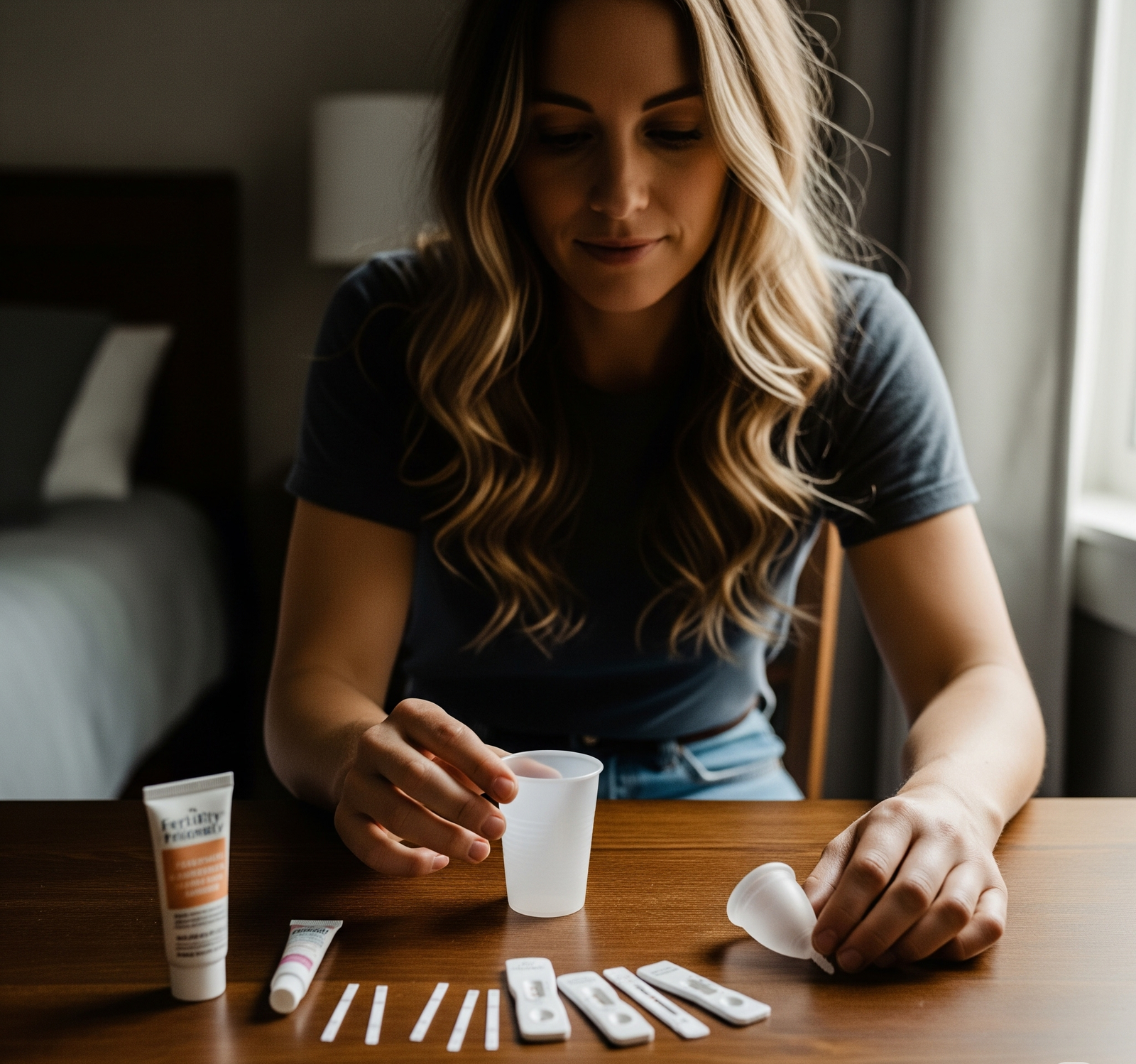DIY insemination means trying to get pregnant without going to a clinic. You do it yourself, at home. This can save you money. It can also help you feel more in control. Many women and couples choose this method.
If you’re thinking about trying it, this guide will help. You don’t need fancy tools. You just need good info, the right timing, and a calm space.
What Is DIY Insemination?
DIY insemination is when you place sperm into the vagina using a syringe or other tool. This is done without sex and without a doctor. It’s private, simple, and works for many.
You can use fresh sperm or frozen sperm. Some use a known donor. Others use sperm from a bank.
To understand the basics, start with at home insemination. It explains how the process works.
 Why People Choose It
Why People Choose It
Clinic visits cost a lot. One round of IUI can cost hundreds. IVF can cost thousands.
DIY insemination is affordable. Most tools cost under $20. You also don’t pay for office visits or lab fees.
It also gives you privacy. You don’t need to explain your choices to a doctor or nurse.
You set the pace. You choose the timing. You decide who helps you.
Research on DIY Insemination

Studies show that DIY insemination can be both safe and effective when performed correctly:
Home vs. Clinic Pregnancy Rates
A randomized trial compared six cycles of home insemination using thawed donor sperm to six cycles of clinic‑based IUI. Pregnancy rates were nearly identical: 44.8% for the home group and 45.8% for the clinic group (PubMed). This suggests that, with proper technique and timing, at‑home methods can match clinical success.Success in Couples with Sexual Dysfunction
In a study of couples affected by vaginismus, erectile dysfunction, or premature ejaculation, home intravaginal insemination produced strong results. Women aged 20–33 saw a 69% pregnancy rate over six cycles. Even women aged 33–36 achieved 43%, and those over 36 had 25% success (PubMed). These outcomes highlight how DIY insemination can help diverse couples overcome barriers to conception.Home Collection for Clinic IUI
Recent research examined the effect of collecting semen at home before a clinic-based IUI. The study found no drop in pregnancy rates when patients collected their sample at home. This shows that home collection adds comfort and convenience without compromising success (PubMed).
Tools You Will Need

Here is what you need to get started:
- A clean, needle-free syringe
- A sterile specimen cup
- Ovulation test strips
- Fertility-friendly lubricant (optional)
- A menstrual cup (optional)
You can find these online. The home insemination guide shows where to get them cheap.
Track Your Cycle
Timing is everything. You need to know when you ovulate.
Use ovulation test strips. They check for LH (a hormone that spikes before you release an egg).
Test at the same time each day. When the test line gets darker than the control line, ovulation is close. Inseminate within 12 to 24 hours.
Collecting and Using the Sperm
If you use a known donor, ask him to ejaculate into the sterile cup. Keep the sample at room temperature. Let it sit for 15 to 30 minutes. This lets the sperm liquefy.
Use the syringe to draw up the sperm. Lie down. Insert the syringe into your vagina. Push the plunger slowly.
Stay lying down for 20 to 30 minutes. Some women use a menstrual cup to hold the sperm in longer.
Create a Calm Setting

Choose a quiet, private space. Use a towel or blanket. Put pillows under your hips.
Play soft music or dim the lights. This can help you feel relaxed. Tension can make the process harder.
What to Avoid
- Don’t use regular lube. It can hurt sperm.
- Don’t use the same syringe twice.
- Don’t skip hand washing.
- Don’t inseminate too early or too late.
- Don’t get up right away after insemination.
Tips to Improve Your Odds
- Track your cycle for a few months first.
- Inseminate two days in a row during your fertile window.
- Eat well and take prenatal vitamins.
- Stay consistent and patient.
How Many Tries Does It Take?
Some women get pregnant on the first try. Others need a few cycles.
It depends on many things. Age, sperm health, timing, and stress can all play a role.
Try not to stress if it doesn’t happen right away.
Is It Safe?
Yes, if you follow the steps and keep everything clean. Always wash your hands. Don’t reuse supplies. Use only sterile tools.
If you ever feel unsure, talk to a doctor. You can still do most of it on your own, but advice helps.
Is It Legal?
DIY insemination is legal in most places. But laws about sperm donation can vary.
If you use a known donor, it’s smart to sign a written agreement. It can help avoid problems later.
You can find free sample agreements online.
What If It Doesn’t Work?

If you’ve tried for a few months and nothing happens, take a step back.
Make sure you’re timing things right. Try tracking other signs like cervical mucus.
You can also talk to a doctor to rule out medical issues.
DIY insemination doesn’t work for everyone. But it’s a good place to start.
You may also want to review your tools. Using a reliable at home insemination kit can make a difference—especially if you’re reusing supplies or unsure what to use
Where to Learn More
If you want help planning your insemination, check out the home insemination guide. It includes:
- Step-by-step instructions
- Tool recommendations
- Success tips
- Mistakes to avoid
- Where to buy cheap supplies
It was written to help women save time, money, and stress.
Final Thoughts
DIY insemination is simple. It gives you freedom. It lets you try at your own pace.
You don’t need to spend a lot. You don’t need to be perfect. You just need to plan well.
Track your cycle. Stay clean. Use the right tools. Give your body time.
And most of all, be kind to yourself.
You are doing something important. You deserve support, clarity, and peace.



